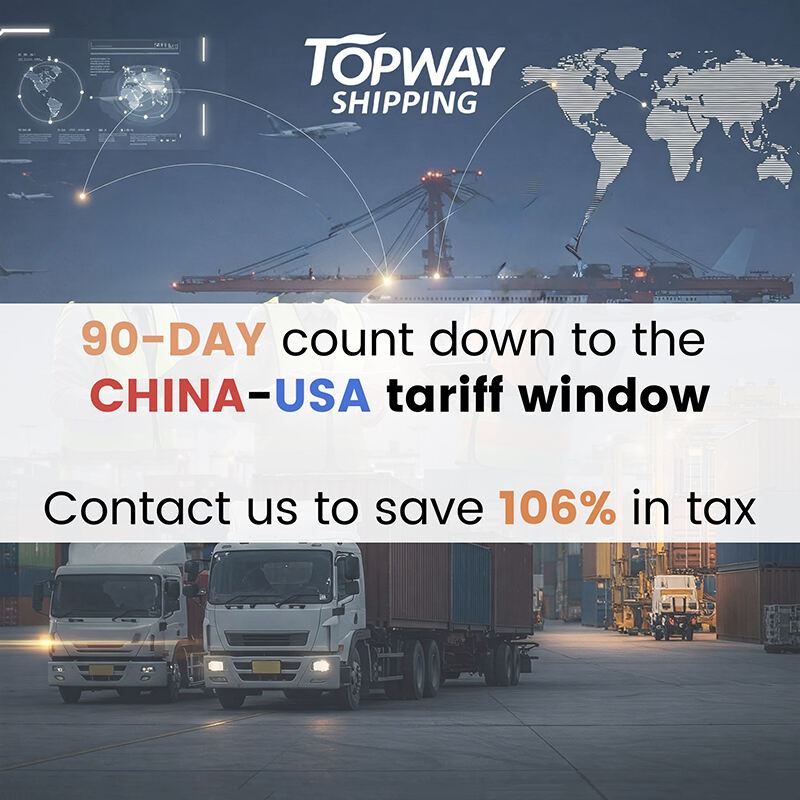Special Update – China-US Tariff Pause: Market Recovery & Freight Implications
The United States and China have agreed to a 90-day suspension of the retaliatory tariffs that were reinstated earlier this year. This temporary relief is expected to stimulate a short-term rebound in trade volumes and cause ripple effects across the logistics industry — including earlier-than-usual peak season activity, tightening capacity, and rising freight costs.
Policy Summary: A 90-Day Window of Opportunity
Starting May 14, the US will reduce its tariffs on Chinese goods from 125% to 10%. However, due to additional fentanyl-related tariffs imposed in February and March (10% each), the effective baseline tariff on Chinese exports to the US is now 30%.
Other important changes include:
For postal shipments from China, duties will drop from 120% to 54%, though the $100 flat fee per parcel remains unchanged.
For low-value goods not shipped via postal services, the formal entry process still applies, but tariffs have been cut from 145% to 30%.
China, in response, will also lower tariffs on all US exports to 10%. Both countries plan to continue negotiations throughout this 90-day window, aiming to reach a broader trade agreement before August.
Demand Outlook: Inventory Rebuild & Frontloading Expected
The reduction in tariffs is likely to trigger a noticeable uptick in US import demand, especially as many buyers have been holding back orders due to high costs.
We expect to see:
Inventory replenishment from US importers whose stock levels may have dropped in April.
A resurgence in frontloading behavior, as businesses seek to avoid potential tariff increases after August.
Quick response from Chinese suppliers, many of whom have large volumes of finished goods ready for shipment.
Data from the National Retail Federation shows that even with 20% tariffs in place in March, US imports from China rose 11% year-over-year. This suggests that moderate tariff levels may not meaningfully suppress demand.
That said, since many companies already frontloaded heavily in Q4 2024, this year’s peak season could be shorter and flatter, with volumes starting early and tapering off sooner than usual.
Freight Market Impacts: Rate Pressure & Capacity Challenges Ahead
Even as volumes dropped sharply in April, spot rates on the transpacific lane have remained stable, thanks to proactive capacity management by carriers:
To the US West Coast: ~$2,300/FEU
To the US East Coast: ~$3,400/FEU
Carriers have been blanking sailings, suspending services, and deploying smaller vessels to manage space and avoid rate collapse.
As demand rebounds:
Capacity will likely tighten, as vessels and containers need to be repositioned.
Empty container availability may decrease, given fewer backhaul sailings in recent weeks.
Port congestion could re-emerge at both origin and destination hubs.
Adding to the strain, Red Sea diversions are still tying up a portion of the global fleet, further reducing flexibility.
While rates are expected to rise modestly in the near term, a sharp spike like last year’s is unlikely. Rates today remain more than 30% lower than in 2024, and competition among new carrier alliances continues to limit how high prices can climb.
Recommended Actions for Shippers
To stay ahead in this volatile environment, shippers should:
Ship early to take advantage of the tariff window and avoid potential congestion in July–August.
Stay in close contact with freight forwarders and suppliers to manage lead times and space availability.
Re-evaluate tariff classification strategies to ensure compliance and optimize duty costs.
Build in flexibility by considering multimodal shipping options and working with multiple carriers.
Conclusion: A Breather in Policy, A Sprint in Logistics.
This 90-day tariff pause offers a rare window for businesses to stabilize supply chains and adjust inventory strategies. But with uncertainty likely to return later this summer, the next few weeks will be crucial.
Companies that act early, move fast, and remain flexible will be best positioned to navigate the coming months —whether tariffs stay low or return with force.Any problem can contact topway shipping,Let us handle it all.

 EN
EN
 AR
AR
 BG
BG
 HR
HR
 CS
CS
 DA
DA
 NL
NL
 FI
FI
 FR
FR
 DE
DE
 EL
EL
 HI
HI
 IT
IT
 JA
JA
 KO
KO
 NO
NO
 PL
PL
 PT
PT
 RO
RO
 RU
RU
 ES
ES
 SV
SV
 TL
TL
 IW
IW
 ID
ID
 LT
LT
 SK
SK
 SL
SL
 UK
UK
 VI
VI
 GL
GL
 HU
HU
 TH
TH
 TR
TR
 MS
MS
 GA
GA
 IS
IS
 BN
BN
 LO
LO
 LA
LA








